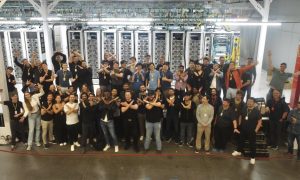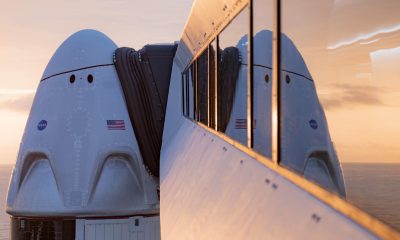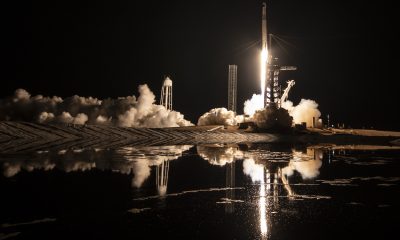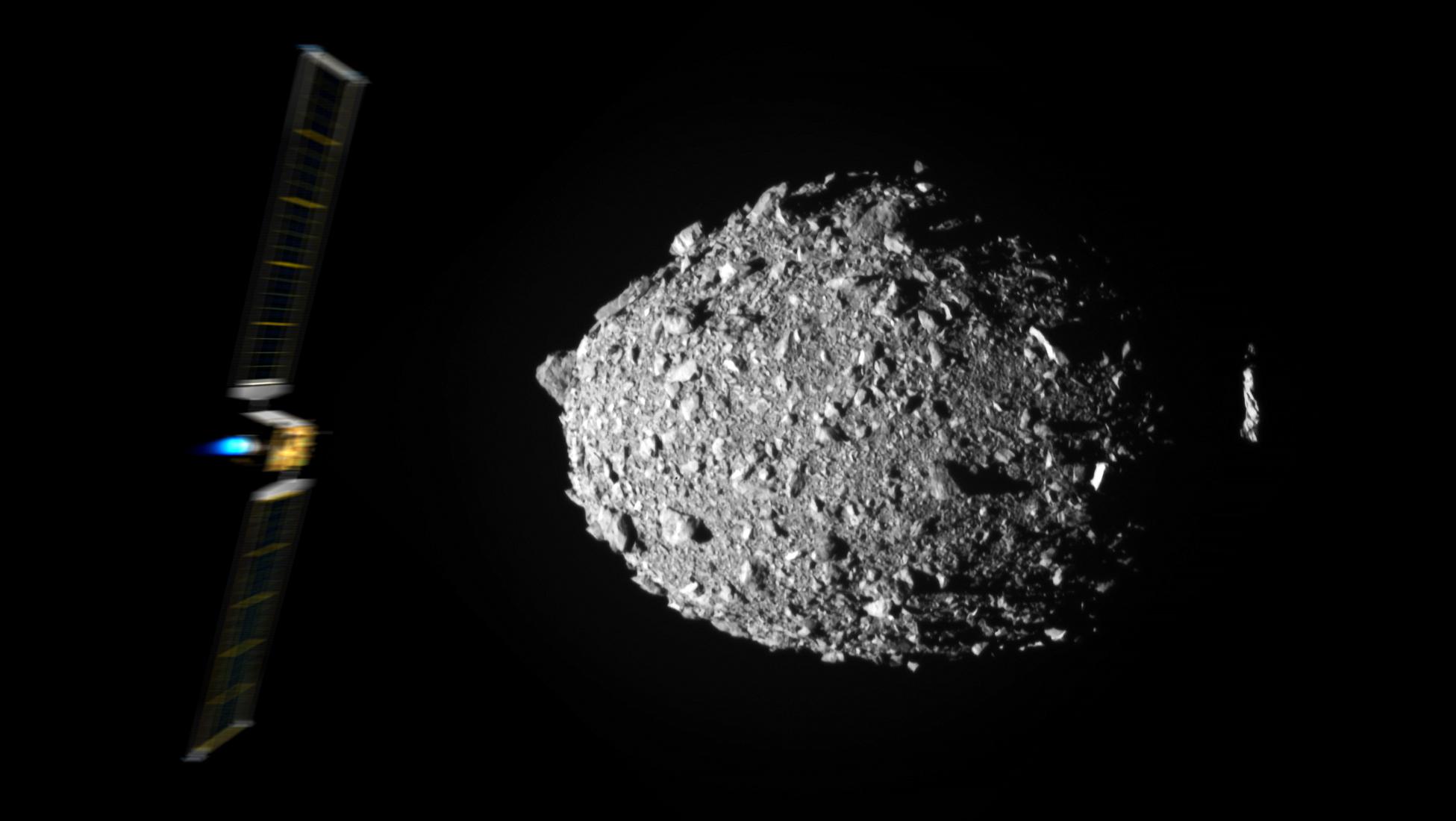

News
NASA spacecraft successfully slams into asteroid ten months after SpaceX launch
Ten months after launching into interplanetary space on a SpaceX Falcon 9 rocket, NASA’s Double Asteroid Redirect Test (DART) spacecraft has successfully impacted an asteroid moon.
Falcon 9 lifted off from Vandenberg Space Force Base (VSFB) Space Launch Complex 4 (SLC-4) carrying the 630-kilogram (~1400 lb) spacecraft on November 24th, 2021. The rocket performed flawlessly, continuing a streak of successful launches, and boosted DART on its way to a near-Earth asteroid pair.
The goal: slam into the small asteroid moon Dimorphos at an eyewatering speed of 6.3 kilometers per second (14,000 mph / Mach 18). Ten months later, the spacecraft has accomplished exactly that, successfully crashing into a target about 160 meters (530 ft) wide just 17 meters away from a perfect ‘bullseye’ after traveling for ten months and hundreds of millions of kilometers through space. Depending on the results NASA and dozens of other groups will now attempt to glean from ground and space telescopes, the successful impact could be a major leap forward for the field of planetary defense.
The main goal of planetary defense is to protect humanity’s home planet from asteroids, a threat that has routinely caused mass-extinction events throughout the multibillion-year history of life on Earth. With the technology to both detect and reach virtually all near-Earth objects (NEOs) more or less at hand, DART is the first attempt to test and verify what would seem to be the easiest and most obvious method of redirecting asteroids: knocking them off course with the spacecraft itself.
Planetary science and the behavior of things in microgravity conditions have a tendency to defy expectations, however, so testing that assumption is essential. The perfect way to do so came to DART Lead Investigator Andy Chang in a burst of mid-exercise inspiration: instead of hitting any odd NEO, a small spacecraft could slam into a tiny asteroid moon of a much larger parent asteroid. Hitting an asteroid moon would mitigate the small but nonzero risk of accidentally redirecting the target towards Earth while also amplifying the results, making them much easier to observe from tens of millions of kilometers away.
Rather than being forced to search for a virtually imperceptible change in a single asteroid’s half-billion-kilometer-long orbit, the results of hitting the right asteroid moon would be much more easily detectable as a change in the moon’s much smaller orbit around its untouched parent asteroid.
The problem is that aside from spectrographic readings that tell scientists the broad strokes of an asteroid’s composition and other telescope images that can make out the rough shape, it’s very difficult to scout the objects without actually visiting them. And given the difficulty, spacecraft have only visited a handful of the virtually countless asteroids of our solar system. Without knowing exactly what a target asteroid’s surface and subsurface are like, it’s hard to predict exactly what a spacecraft impacting that asteroid will do. A looser surface, which is what most visited asteroids appear to have, would be much worse at momentum transfer than a boulder or relatively solid surface of rock.
As an example, as DART rapidly approached and revealed more detailed views of the surface of Didymos and Dimorphos in its final minutes, Chang himself was surprised to see just how rough and boulder-strewn the surface of both asteroids were. Then, after the spacecraft impact, many scientists were also surprised to almost immediately see a massive cloud of dust – easily visible from ground-based telescopes – ejected from Dimorphos.
Despite the DART spacecraft’s eventful demise, the fun has only just begun on the ground as scientists attempt to solve that riddle (and many others) and begin searching for changes in Dimorphos’ orbit. Data will soon arrive from even larger and more prestigious observatories, including NASA’s space-based Hubble and Webb Space Telescopes. Italian companion cubesat LICIACube, which deployed from DART shortly before impact, will also downlink images it took up close, potentially offering the most detailed view of the impact for years.
Meanwhile, the European Space Agency (ESA) is developing a spacecraft called Hera that will launch in 2024 and attempt to enter orbit around Didymos and Dimorphos as early as late 2026 to examine the aftermath of DART’s last stand in even greater detail.
In the more distant future, particularly if the international science community ultimately concludes that DART did successfully redirect an asteroid (moon), it’s possible that the mission will help to kickstart an entirely new global project and fleet of spacecraft that will stand ready to protect Earth if the need ever truly arises. With a little luck and a modest amount of government funding, humanity may soon be able to entirely eradicate one of the most infamous sources of mass extinction.
News
Tesla launches in India with Model Y, showing pricing will be biggest challenge
Tesla finally got its Model Y launched in India, but it will surely come at a price for consumers.
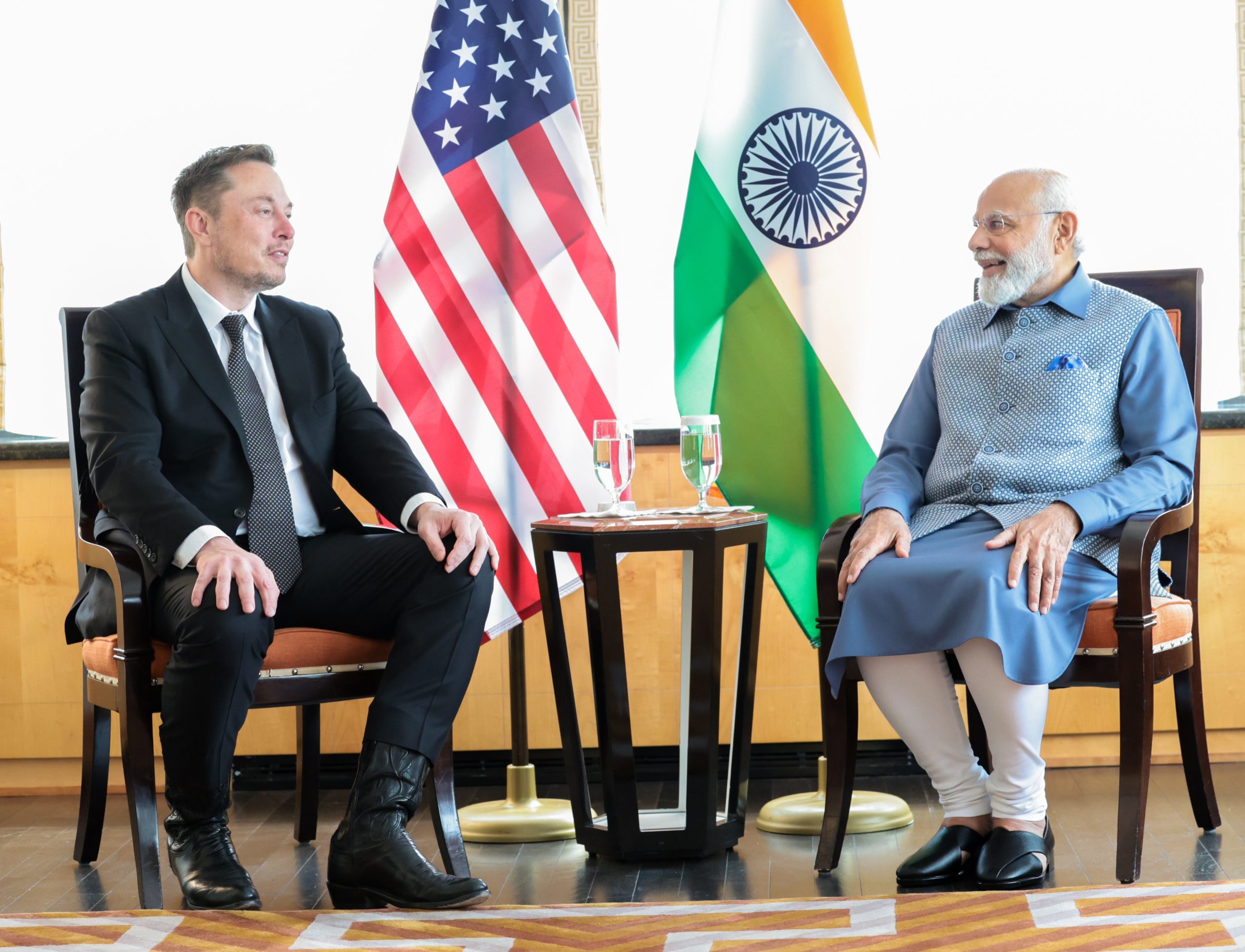
Tesla has officially launched in India following years of delays, as it brought its Model Y to the market for the first time on Tuesday.
However, the launch showed that pricing is going to be its biggest challenge. The all-electric Model Y is priced significantly higher than in other major markets in which Tesla operates.
On Tuesday, Tesla’s Model Y went up for sale for 59,89,000 rupees for the Rear-Wheel Drive configuration, while the Long Range Rear-Wheel Drive was priced at 67,89,000.
This equates to $69,686 for the RWD and $78,994 for the Long Range RWD, a substantial markup compared to what these cars sell for in the United States.
🚨 Here’s the difference in price for the Tesla Model Y in the U.S. compared to India.
🚨 59,89,000 is $69,686
🚨 67,89,000 is $78,994 pic.twitter.com/7EUzyWLcED— TESLARATI (@Teslarati) July 15, 2025
Deliveries are currently scheduled for the third quarter, and it will be interesting to see how many units they can sell in the market at this price point.
The price includes tariffs and additional fees that are applied by the Indian government, which has aimed to work with foreign automakers to come to terms on lower duties that increase vehicle cost.
Tesla Model Y seen testing under wraps in India ahead of launch
There is a chance that these duties will be removed, which would create a more stable and affordable pricing model for Tesla in the future. President Trump and Indian Prime Minister Narendra Modi continue to iron out those details.
Maharashtra Chief Minister Devendra Fadnavis said to reporters outside the company’s new outlet in the region (via Reuters):
“In the future, we wish to see R&D and manufacturing done in India, and I am sure at an appropriate stage, Tesla will think about it.”
It appears to be eerily similar to the same “game of chicken” Tesla played with Indian government officials for the past few years. Tesla has always wanted to enter India, but was unable to do so due to these import duties.
India wanted Tesla to commit to building a Gigafactory in the country, but Tesla wanted to test demand first.
It seems this could be that demand test, and the duties are going to have a significant impact on what demand will actually be.
Elon Musk
Tesla ups Robotaxi fare price to another comical figure with service area expansion
Tesla upped its fare price for a Robotaxi ride from $4.20 to, you guessed it, $6.90.

Tesla has upped its fare price for the Robotaxi platform in Austin for the first time since its launch on June 22. The increase came on the same day that Tesla expanded its Service Area for the Robotaxi ride-hailing service, offering rides to a broader portion of the city.
The price is up from $4.20, a figure that many Tesla fans will find amusing, considering CEO Elon Musk has used that number, as well as ’69,’ as a light-hearted attempt at comedy over the past several years.
Musk confirmed yesterday that Tesla would up the price per ride from that $4.20 point to $6.90. Are we really surprised that is what the company decided on, as the expansion of the Service Area also took effect on Monday?
But the price is now a princely $6.90, as foretold in the prophecy 😂
— Elon Musk (@elonmusk) July 14, 2025
The Service Area expansion was also somewhat of a joke too, especially considering the shape of the new region where the driverless service can travel.
I wrote yesterday about how it might be funny, but in reality, it is more of a message to competitors that Tesla can expand in Austin wherever it wants at any time.
Tesla’s Robotaxi expansion wasn’t a joke, it was a warning to competitors
It was only a matter of time before the Robotaxi platform would subject riders to a higher, flat fee for a ride. This is primarily due to two reasons: the size of the access program is increasing, and, more importantly, the service area is expanding in size.
Tesla has already surpassed Waymo in Austin in terms of its service area, which is roughly five square miles larger. Waymo launched driverless rides to the public back in March, while Tesla’s just became available to a small group in June. Tesla has already expanded it, allowing new members to hail a ride from a driverless Model Y nearly every day.
The Robotaxi app is also becoming more robust as Tesla is adding new features with updates. It has already been updated on two occasions, with the most recent improvements being rolled out yesterday.
Tesla updates Robotaxi app with several big changes, including wider service area
News
Tesla Model Y and Model 3 dominate U.S. EV sales despite headwinds
Tesla’s two mainstream vehicles accounted for more than 40% of all EVs sold in the United States in Q2 2025.
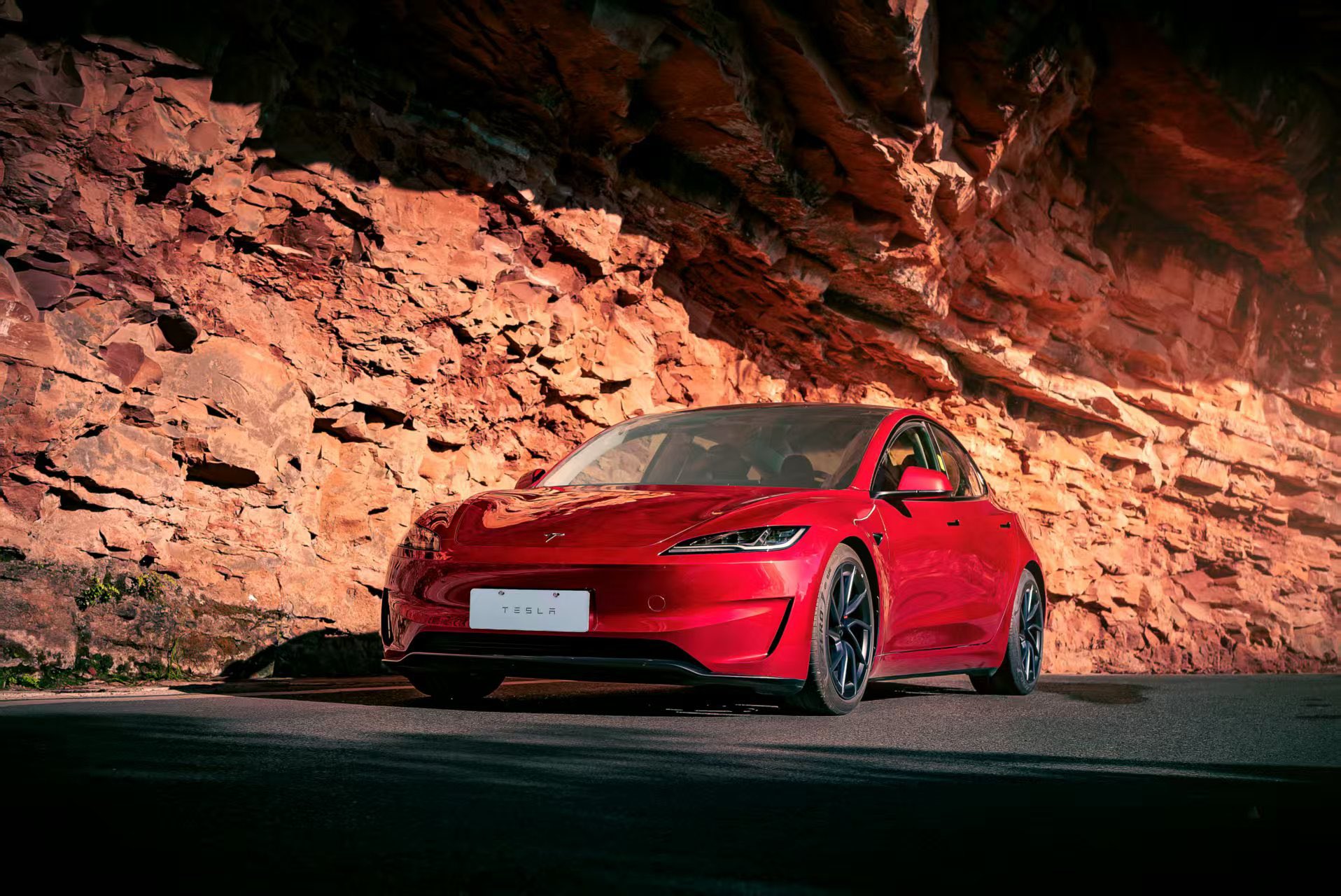
Tesla’s Model Y and Model 3 remained the top-selling electric vehicles in the U.S. during Q2 2025, even as the broader EV market dipped 6.3% year-over-year.
The Model Y logged 86,120 units sold, followed by the Model 3 at 48,803. This means that Tesla’s two mainstream vehicles accounted for 43% of all EVs sold in the United States during the second quarter, as per data from Cox Automotive.
Tesla leads amid tax credit uncertainty and a tough first half
Tesla’s performance in Q2 is notable given a series of hurdles earlier in the year. The company temporarily paused Model Y deliveries in Q1 as it transitioned to the production of the new Model Y, and its retail presence was hit by protests and vandalism tied to political backlash against CEO Elon Musk. The fallout carried into Q2, yet Tesla’s two mass-market vehicles still outsold the next eight EVs combined.
Q2 marked just the third-ever YoY decline in quarterly EV sales, totaling 310,839 units. Electric vehicle sales, however, were still up 4.9% from Q1 and reached a record 607,089 units in the first half of 2025. Analysts also expect a surge in Q3 as buyers rush to qualify for federal EV tax credits before they expire on October 1, Cox Automotive noted in a post.
Legacy rivals gain ground, but Tesla holds its commanding lead
General Motors more than doubled its EV volume in the first half of 2025, selling over 78,000 units and boosting its EV market share to 12.9%. Chevrolet became the second-best-selling EV brand, pushing GM past Ford and Hyundai. Tesla, however, still retained a commanding 44.7% electric vehicle market share despite a 12% drop in in Q2 revenue, following a decline of almost 9% in Q1.
Incentives reached record highs in Q2, averaging 14.8% of transaction prices, roughly $8,500 per vehicle. As government support winds down, the used EV market is also gaining momentum, with over 100,000 used EVs sold in Q2.
Q2 2025 Kelley Blue Book EV Sales Report by Simon Alvarez on Scribd
-

 Elon Musk2 weeks ago
Elon Musk2 weeks agoTesla investors will be shocked by Jim Cramer’s latest assessment
-

 News3 days ago
News3 days agoTesla debuts hands-free Grok AI with update 2025.26: What you need to know
-

 Elon Musk1 week ago
Elon Musk1 week agoElon Musk confirms Grok 4 launch on July 9 with livestream event
-

 Elon Musk5 days ago
Elon Musk5 days agoxAI launches Grok 4 with new $300/month SuperGrok Heavy subscription
-

 News2 weeks ago
News2 weeks agoTesla Model 3 ranks as the safest new car in Europe for 2025, per Euro NCAP tests
-

 Elon Musk2 weeks ago
Elon Musk2 weeks agoxAI’s Memphis data center receives air permit despite community criticism
-

 News5 days ago
News5 days agoTesla begins Robotaxi certification push in Arizona: report
-

 Elon Musk2 weeks ago
Elon Musk2 weeks agoTesla scrambles after Musk sidekick exit, CEO takes over sales


